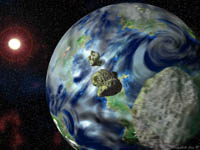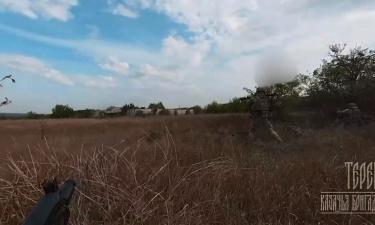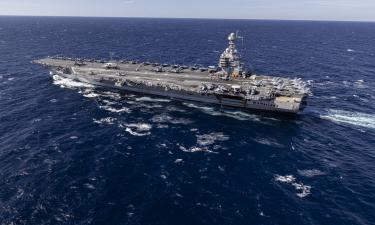U.S. space agency says it could find most killer asteroids by 2020
NASA officials say the space agency is capable of finding almost every asteroid that might pose a devastating threat to Earth, but because it lacks the money to do it, the job will not get done.

The cost to find at least 90 percent of the 20,000 potentially hazardous asteroids and comets by 2020 would be about $1 billion (EUR760 billion), according to a report NASA will release later this week. The report was previewed Monday at a Planetary Defense Conference in Washington.
Congress asked NASA in 2005 to come up with a plan to track most killer asteroids and propose how to deflect the potentially catastrophic ones.
"We know what to do; we just don't have the money," said Simon Worden, director of NASA's Ames Research Center.
These are asteroids that are bigger than 460 feet (140 meters) in diameter slightly smaller than the Superdome in New Orleans, Louisiana. They are threats even if they do not hit Earth, because if they should explode while close enough an event that could be caused by heating in both the rock and the atmosphere the devastation from the shockwaves still would be immense. The explosion alone could have with the power of 100 million tons (91 million metric tons) of dynamite, enough to devastate a small U.S. state, they said.
The agency already is tracking larger objects, at least 3,300 feet (1,005 meters) in diameter, which could wipe out most life on Earth, much like what is theorized to have happened to dinosaurs 65 million years ago. Even that search, which has spotted 769 asteroids and comets none on a course to hit Earth is behind schedule. It is supposed to be completed by the end of next year.
NASA needs to do more to locate other smaller, but still potentially dangerous space bodies. While an Italian observatory is doing some work, the United States is the only government with an asteroid-tracking program, NASA said.
One solution would be to build a new ground telescope solely for the asteroid hunt, and piggyback that use with other agencies' telescopes for a total of $800 million (EUR611.5 million). Another would be to launch a space infrared telescope that could do the job faster for $1.1 billion (EUR840 million), but NASA program scientist Lindley Johnson said NASA and the White House called both those choices too costly.
A cheaper option would be simply to piggyback on other agencies' telescopes, a cost of about $300 million (EUR229.3 million), also rejected, Johnson said.
"The decision of the agency is we just can't do anything about it right now," he added.
Earth got a scare in 2004, when initial readings suggested an 885-foot asteroid called 99942 Apophis seemed to have had a chance of hitting Earth in 2029. But more observations showed that would not happen. Scientists say there is 1 chance in 45,000 that it could hit in 2036.
They think it would be most likely strike the Pacific Ocean, which would cause a tsunami on the U.S. West Coast the size of the devastating 2004 Indian Ocean wave, reports AP.
John Logsdon, space policy director at George Washington University, said a stepped-up search for such asteroids is needed.
"You can't deflect them if you can't find them," Logsdon said. "And we can't find things that can cause massive damage."
Subscribe to Pravda.Ru Telegram channel, Facebook, RSS!





